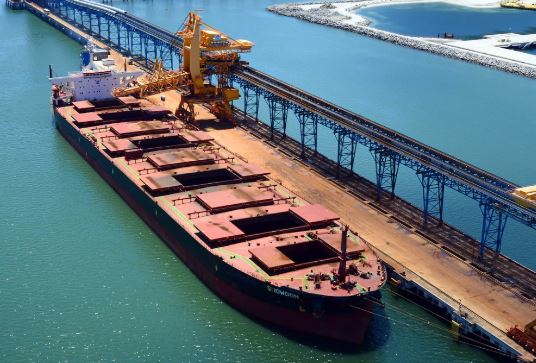Capesize freight rates continued its downtrend as the physical market came under pressure with further easing of rates.
Thus, the Capesize 5 time charter average fell by $1,958 day-on-day to $31,507 on Thursday, with a sluggish Atlantic market and Pacific rates moving
Due to weak Capesize market, the Baltic Dry Index (BDI) fell by 3.62% or 74 points to 1,970 readings, below the 2,000 readings from recent rally.
More losses on bearish market sentiments
The forward freight agreement market was in a huge backwardation and extended losses on bearish market sentiments.
However, some trade participants expected some improvement with the return of Chinese participants by the end of the week.
There was a standoff between shipowners and charterers in the Atlantic market and Brazilian miners continued to seek for Panamax vessels to move iron ore cargoes due to the lack of Capesizes for October loading laycans.
The Pacific market seemed to do better due to decent shipping demand, but still saw freight rates moving south.
Mining majors like Rio Tinto and FMG were still active in seeking for vessels to move iron ore cargoes out of West Australia with indicative freight rate heard around the range of $9.80-$10.10/wmt.
VLSFO prices rise on back of firm crude oil prices
VLSFO prices inched up $1/mt day-on-day to $343.50/mt at the port of Singapore, due to recent strength in crude oil prices.
Crude oil productions were threatened by Hurricane Delta in the Gulf of Mexico, which was estimated to remove around 5 million barrels off the market, while the workers strike continued at the North Sea productions.
Meanwhile, Saudi oil producers suggested possible supply cuts that lifted oil prices as Brent crude prices headed toward $43 per barrel, while WTI crude inched up toward $41 per barrel.
